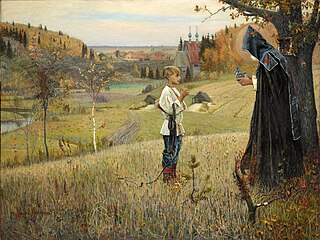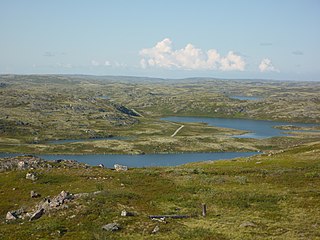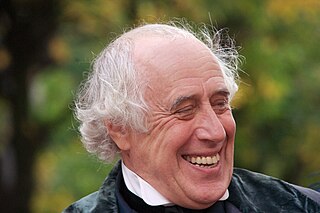 |
|---|
Supreme Soviet elections were held in the Russian SFSR on 18 February 1951, [1] [2] as part of regional elections across the Soviet Union.
 |
|---|
Supreme Soviet elections were held in the Russian SFSR on 18 February 1951, [1] [2] as part of regional elections across the Soviet Union.
The elections took place amidst a series of purges of figures disliked by the government, including the anti-cosmopolitan campaign, the Trophy Affair , as well as deportations (including the deportation of the Soviet Greeks) and persecution of religions (including Operation North). The Cold War had also begun, including incidents such as the Berlin Blockade, Battle of Korea Strait and the Tito–Stalin split.
The elections were held in accordance with the Regulations on Elections to the Supreme Soviet of the RSFSR, which had been approved by the decree of the Presidium of the Supreme Council of the RSFSR on 11 December 1950. [3]
Soviet propaganda actively covered the elections in news publications, emphasising their supposed transparency and fairness and contrasting them with the elections of Western Europe and North America. [1] [2]
Soviet elections began to be a ritual to show loyalty to the government and some voters attended as early as possible to demonstrate their loyalty, with some queueing up early in the night, as the first person to vote was included in the report for the regional committee. The elections were classed as a holiday, with buffets with sandwiches, sweets and scarce goods provided, while there were also concerts, including jazz. [4]

The penultimate USSR-era flag was adopted by the Russian Soviet Federative Socialist Republic (RSFSR) in 1954 and used until 1991. The flag of the Russian SFSR was a defacement of the flag of the USSR. The constitution stipulated:
The state flag of the Russian Soviet Federative Socialist Republic (SFSR) presents itself as a red, rectangular sheet with a light-blue stripe at the pole extending all the width [read height] which constitutes one eighth length of the flag.

Khakassia, officially the Republic of Khakassia, is a republic of Russia located in southern Siberia. It is situated between Krasnoyarsk Krai to the north and the Altai Republic to the south.

Karachay-Cherkessia, officially the Karachay-Cherkess Republic, is a republic of Russia located in the North Caucasus. It is administratively part of the North Caucasian Federal District. As of the 2021 census, Karachay-Cherkessia has a population of 469,865. Cherkessk is the largest city and the capital of the republic.

When the Soviet Union existed, different governments had ruled the northern Caucasus regions of Chechnya and Ingushetia. Within the Mountain Autonomous Socialist Soviet Republic, later annexed into the Russian Socialist Federative Soviet Republic, they were known as the Chechen Autonomous Oblast and the Ingush Autonomous Oblast, which were unified on January 15, 1934, to form the Checheno-Ingush Autonomous Oblast. It was elevated to an autonomous republic as the Checheno-Ingush Autonomous Soviet Socialist Republic from 1936 to 1944 and again from 1957 to 1993. Its capital was Grozny.

Radonezh, formerly known as Gorodok (Городо́к) is a historic village in Moscow Oblast, Russia, located about 15 kilometers (9.3 mi) from Sergiyev Posad.
The classification system of inhabited localities in Russia and some other post-Soviet states has certain peculiarities compared with those in other countries.

Murmansk Oblast is a federal subject of Russia, which is located in the northwestern part of the country, occupying mostly the Kola Peninsula. The oblast itself was established on May 28, 1938, but some kind of administrative organization of the territory existed here since at least the 13th century. As of the 2002 Census, Russians account for the majority of the oblast's population, with the indigenous Sami constituting only a 0.20% minority (1,769 people).

Pechengsky District is an administrative district (raion), one of the six in Murmansk Oblast, Russia. As a municipal division, it is incorporated as Pechengsky Municipal District. It is located in the northwest of the oblast, on the coast of the Barents Sea and borders Finland in the south and southwest and Norway in the west, northwest, and north. The area of the district is 8,662.22 square kilometers (3,344.50 sq mi). Its administrative center is the urban locality of Nikel. Its population was 38,920 (2010 Census); 46,404 (2002 Census); 59,495 (1989 Soviet census). The population of Nikel accounts for 32.8% of the district's total population.

The Bolshaya Ussurka is a river in the Russian Far East in Primorsky Krai. It is a right tributary of the Ussuri, which it meets near Dalnerechensk.

Parliamentary elections were held in Transnistria on 12 December 2010. All 43 seats of the Supreme Council of Transnistria were up for election. Transnistria uses first past the post with 43 single seat constituencies.

Sergey Grigorievich Migitsko is a Soviet and Russian film and theater actor, TV presenter, Honored Artist of the RSFSR (1991), People's Artist of Russia (1998).
On the Rehabilitation of Repressed Peoples is the law N 1107-I of the Russian Soviet Federative Socialist Republic signed on April 29, 1991 and updated by the July 1, 1993 law N 5303-I of the Russian Federation.
Legislative elections were held in the Russian Soviet Federative Socialist Republic on 26 June 1938, the first after the establishment of the Soviet Union.

Honored Artist of the Russian Soviet Federated Socialist Republic was an honorary title of the RSFSR.

The Gur is a river in Khabarovsk Krai, Russia. It is the 9th longest tributary of the Amur, with a length of 349 kilometres (217 mi) and a drainage basin area of 11,800 square kilometres (4,600 sq mi). The river was known as "Khungari" (Хунгари) until the 1972 Renaming of geographical sites in the Russian Far East. The town of Gurskoe, as well as the villages of Kenai, Uktur and Snezhny are located by the river. Gold mining is being developed in the river basin.

The first cabinet of Ivan Silayev was the composition of the Council of Ministers of the Russian Soviet Federative Socialist Republic in office from July 1990 to July 1991.
Elections to the Supreme Soviet of the RSFSR were held on 9 February 1947.

Badge of Distinction "For Mentoring" is a state award of the Russian Federation.